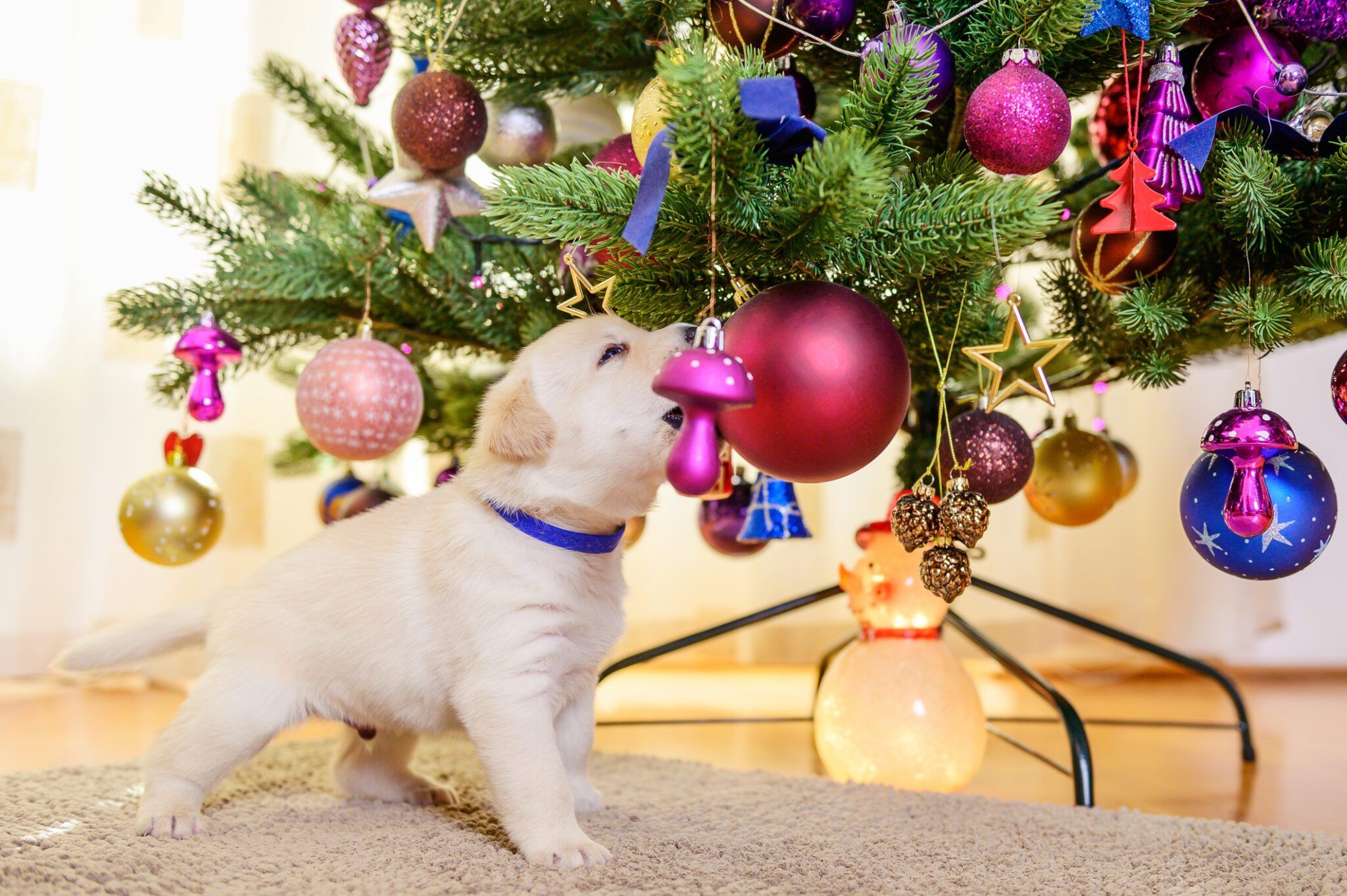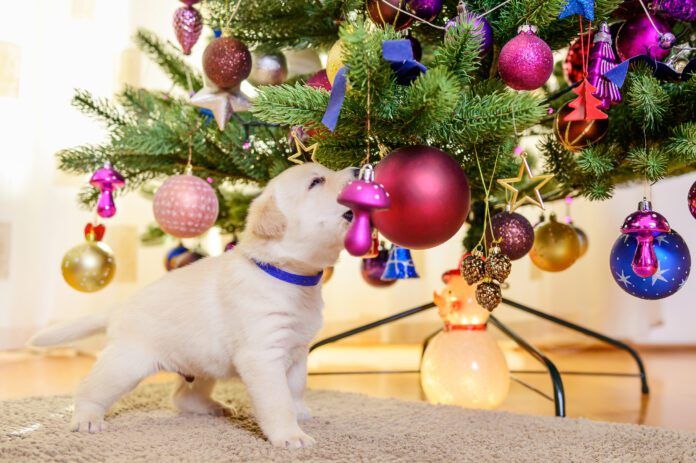Chewing on Christmas tree branches can hurt your dog. While touching the tree here and there won’t harm him, ingesting the branches, needles, and/or sap can.
Signs that your dog may have tasted the Christmas tree:
- Excessive drooling
- Shaking head or pawing at mouth
- Vomiting
- Diarrhea
- Irritated mouth
- Not wanting to eat
- Lethargy
- Weakness
Dogs are more likely to experience stomach upset and other issues if they eat a large amount of the Christmas tree (or lick up a bunch of sap). Small dogs are, of course, at higher risk than big dogs.
If the Christmas tree sap or needles irritate your dog’s mouth, even a small amount can cause drooling and other signs of discomfort. This can also happen simply because your dog doesn’t like the taste.
Most mild symptoms should go away quickly. If your dog has diarrhea or is vomiting for more than a day, call your veterinarian to get medications to calm his system down.
The more concerning symptoms are ones that are more severe, such as both vomiting and diarrhea at the same time, muscle weakness, or symptoms that persist over time. Vomiting and diarrhea at the same time is an emergency due to rapid dehydration. If your dog has a poor appetite and doesn’t seem to feel well, he may have an intestinal blockage or perforation from the branches or pine needles. These problems will require surgery.
Pets Drinking Christmas Tree Water
Christmas tree water carries the risk of sap, but it can also contain worse things for your dog. These potentially dangerous toxins include fertilizer and preservatives intended to keep the tree alive longer, as well as bacteria and mold that can build up over time.
Avoid treating your Christmas tree’s water with any fertilizers, and if purchasing your tree off a lot, ask if it has been treated with preservatives. Change the water regularly to prevent buildup of mold and bacteria.
Note: Poinsettias and mistletoe are both toxic holiday hazards for pets.
Are Artificial Trees Safer?
Artificial Christmas trees have some of the same risks if our dogs chew on them. Older fake trees may shed needles, which your dog might eat. Your dog may also choose to chew on the branches. Eating part of an artificial Christmas tree can cause injuries in the mouth and/or an intestinal blockage.
How to Keep Dogs Away from Christmas Trees
Need to keep pets away from your Christmas tree? Try these tips:
- Use a baby gate to keep pets out of the room with the tree
- Use a short decorative fence to keep dogs away from the tree and presents (this will likely not deter cats)
- Place fragile and tempting ornaments (fuzzy animals, balls, candy canes, popcorn strings, etc.) high up on the tree where your dog can’t reach
- Crate your dog in another room when you can’t supervise him around the tree
- Have plenty of fresh water available in the usual locations so your dog isn’t tempted to try to tree water
- Cover the tree water with a tree skirt or other covering
- Anchor the tree so it can’t tip over
- Don’t “invite” your dog to every holiday gathering.

